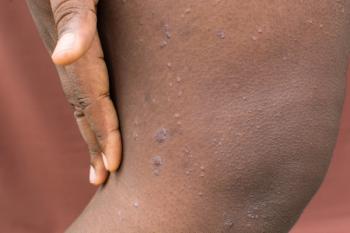
Worsened HF Outcomes Linked to Circulating Endotrophin Levels
This potential outcome was particularly evident among study participants who had heart failure (HF) with preserved ejection fraction, a subtype of HF with few therapeutic options.
Endotrophin, which can be released into circulation after it has accumulated in dysfunctional adipose tissue, is showing potential as a useful biomarker for patient outcomes among those who have
This subtype of HF has few therapeutic options—among them, diuretics, β-blockers, and angiotensin-converting enzyme inhibitors—as well as
The authors of this new study wrote, “Endotrophin, a collagen type VI–derived peptide, mediates metabolic dysregulation, inflammation, and fibrosis in animal models, but has not been studied in human HF.”
There was an overall 74% higher risk of death seen among the 205 TOPCAT participants (HR, 1.74; 95% CI, 1.36-2.24; P < .001), in addition to a 111% higher risk of death or HF-related hospital admission (DHFA) (HR, 2.11; 95% CI, 1.67-2.67; P < .001).
The investigators used the MAGGIC score, a risk score comprising 13 clinical variables, to assess a potential relationship between endotrophin and patient outcomes via unadjusted Cox models and models adjusted for covariates; N-terminal pro B-type natriuretic peptide (NT-proBNP) or BNP levels were also used if available. Their data on endotrophin showed it “improved reclassification and discrimination for mortality risk and DHFA beyond the MAGGIC risk score and NT-proBNP.”
A meta-analysis of PHFS participants (n = 1642) confirmed the above findings on endotrophin among persons who had HF with reduced ejection fraction. There was an 82% greater risk of death (HR, 1.82; 95% CI, 1.66-2.00; P < .001), but this dropped to 34% following adjustment for MAGGIC score and BNP level (HR, 1.34; 95% CI, 1.18-1.52). In addition, unadjusted (HR, 1.40; 95% CI, 1.31-1.50; P < .001) and adjusted (HR, 1.12; 95% CI, 1.03-1.22) analyses showed higher risks of DHFA.
Within this analysis, associations were seen between higher endotrophin levels and patients of an older age and who had a higher body mass index, prevalence of New York Heart Association class III/IV disease, and left ventricular ejection fraction.
“However, compared with endotrophin, associations with DHFA were stronger for MAGGIC risk score and BNP in unadjusted and adjusted models,” the study investigators wrote.
“The search for systemic circulating biomarkers of tissue fibrosis in HFpEF represents an area of great interest, both for purposes of risk stratification and to identify individual patients with specific underlying biologic abnormalities,” the study authors concluded. “We found that endotrophin exhibited such an association with HF outcomes over a broad range of absolute risk in HFpEF.”
Strengths of their findings include using cohorts from multiple countries and incorporating strict criteria to select patients with HFpEF or HFrEF, and a principal limitation was the retrospective nature of endotrophin measurements in frozen samples.
Future research should focus on the effectiveness of reducing endotrophin and if this reflects therapeutic response.
Reference
Chirinos JA, Zhao L, Reese-Petersen AL, et al. Endotrophin, a collagen VI formation–derived peptide, in heart failure. NEJM Evid. Published online September 13, 2022. doi:10.1056/EVIDoa2200091
Newsletter
Stay ahead of policy, cost, and value—subscribe to AJMC for expert insights at the intersection of clinical care and health economics.








































